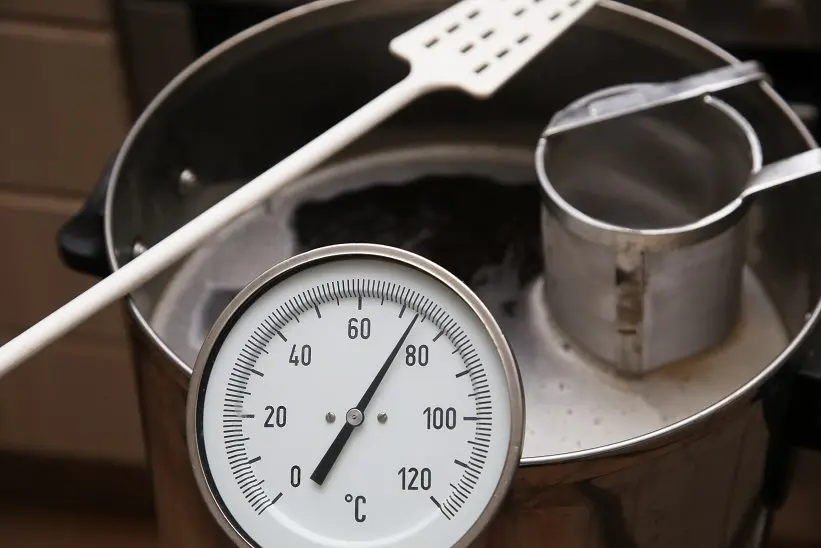Mashing wort for beer is one of the most complex processes in home brewing, which largely shapes the final result – the organoleptic characteristics of beer. The most important thing is to clearly observe the desired temperature during cooking for a set period of time. We will look at the theoretical aspects and find out what each temperature pause affects.
Mashing malt is the process of making beer wort, in which malt is mixed with hot water, then sequentially heated to certain temperature ranges in order to activate different groups of enzymes responsible for taste, strength, density, transparency and foaming in beer.
From a chemical point of view, mashing malt is a continuation of the malting process – the germination and drying of grain to form enzymes that catalyze reactions. During malting, glucans (polysaccharide molecules) in the cell membranes are destroyed, and proteins are also broken down, which reduces the likelihood of turbidity and increases the biological stability of the wort.
Malt modification is the degree of destruction of glucans and proteins in the grain. The process has nothing to do with genetically modified products, it takes place in a malt house in a natural way and is safe for human health.
Most malt sold today is fully modified, so you can limit yourself to saccharification. Mandatory observance of all temperature pauses is required only for homemade and malt of unknown origin.

Temperature pauses when brewing beer
The exact duration of all temperature pauses depends on the recipe of the beer and the type of malt.
1. Acid pause (35-45°C, 15-70 minutes). Reduces the acidity of the mash. The result is a clear beer. It is mainly required for malt that has undergone light roasting, or when adding malt from wheat, rye or oats to the wort. The problem is that a noticeable decrease in acidity is achieved only after 60 minutes of cooking.
For reinsurance, modified barley malt without roasting is enough for a 15-minute acid pause.
2. Protein pause (44-59°C, 10-15 minutes). There is a breakdown of proteins, which reduces the stability of the foam. Also, the protein rest increases the extractivity and reduces the viscosity of the mash in case of occasional stirring during the boil.
3. Saccharification (61-72°C, 50-120 minutes). A mandatory pause for any type of malt (degree of modification), at which the starch is converted into the sugar necessary for fermentation and the density of the beer is formed.
Two enzymes are responsible for saccharification of beer wort: alpha-amylase and beta-amylase. At 61-67°C, beta-amylase is activated, the longer this enzyme works, the drier and stronger the beer is. When the temperature rises to 68-72°C, alpha-amylase comes into action, forming non-fermentable sugars, which make the beer sweet, but reduce the alcohol content, since the concentration of sugars suitable for yeast to be processed into alcohol decreases.
4. Mesh out or mash out (77-79°C, 5 minutes). Required to stop the work of enzymes. Produced before adding hops. The practical goal is to reduce viscosity, increase wort filtration rate, and increase beer body.
It is very important that when washing the grain pillow, as well as the wort itself after filtering, have the right temperature, otherwise the enzymes will continue to work.
At temperatures above 80°C, tannins appear in the must, as a result of which astringency appears in the taste.
Single break mash (66-67°C, about 60 minutes). A technique for beginner brewers who do not have automated equipment. Only suitable for modified malt. The temperature range of a single mash is the sweet spot for alpha and beta amylase. As a result, a moderately strong and fairly dense beer is obtained, but the ability to correct the organoleptic properties of the drink only by changing the temperature and duration of brewing is lost.
The practical combination of different types of pauses in home brewing with minimal effort is described in detail in the video.









